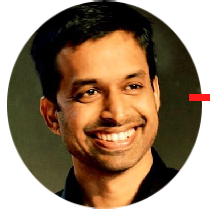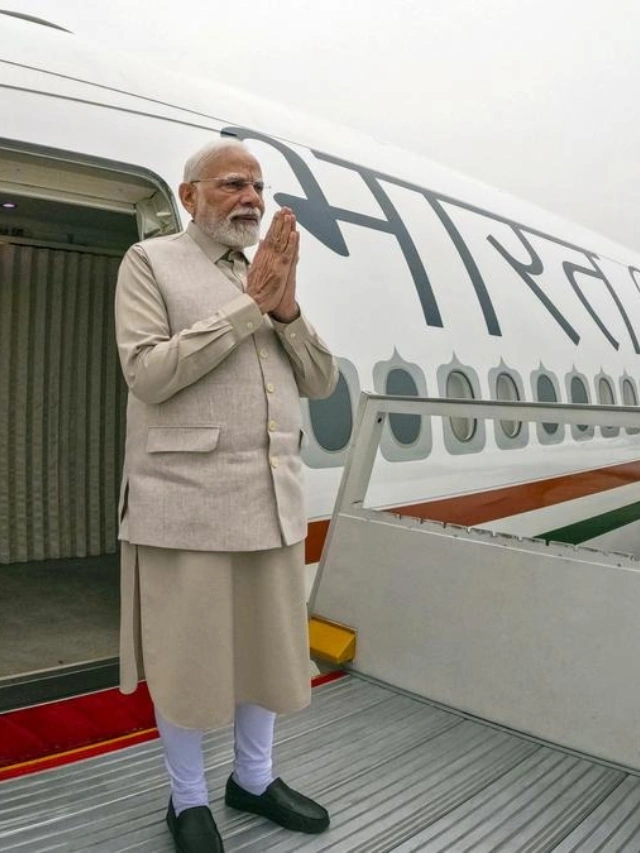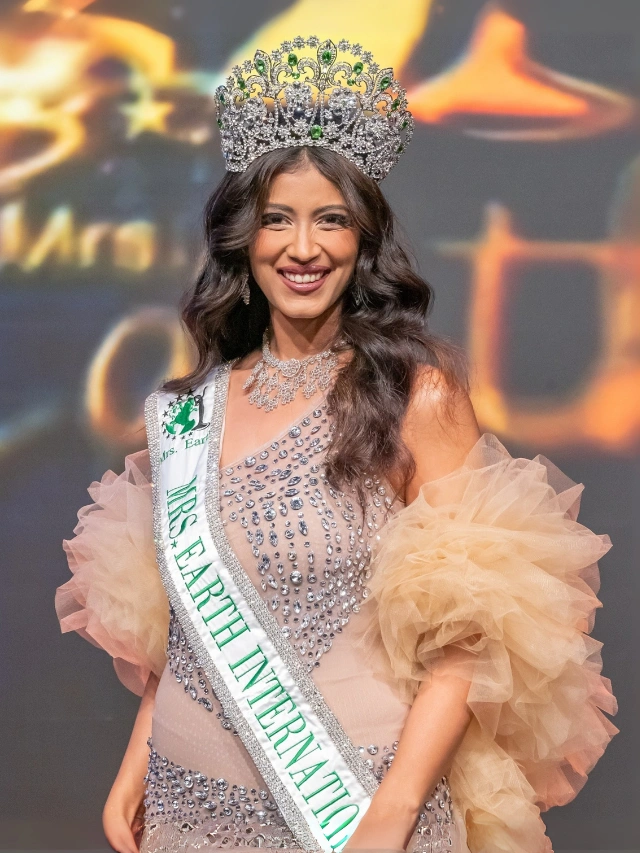Pullela Gopichand
Pullela Gopichand etched his name in history at the time he became the second Indian to win the prestigious All England Open Badminton Championships after Prakash Padukone. He showed exceptional skill throughout the tournament and won each match in dominant fashion without dropping a single game. His crowning achievement became even more remarkable because it came during an injury-riddled career that ended up being cut short by chronic knee problems.
Gopichand’s effect on Indian badminton reaches way beyond his personal successes. The champion’s impressive collection of accolades has the Arjuna Award (1999), the Khel Ratna Award (2001), the Dronacharya Award (2009), and the Padma Bhushan in 2014. He stands as the only Indian coach to receive an ‘Honourable Mention’ from the International Olympic Committee at the 2019 Coaches Lifetime Achievement Awards.
CEO’s | Actors | Politicians | Sports Stars
The Gopichand Badminton Academy revolutionised the sport’s landscape by becoming a talent pipeline that produced numerous champions including Srikanth Kidambi, Parupalli Kashyap, and two Olympic medallists in a relatively short period. This remarkable journey shows how a champion player became the architect of India’s badminton revolution.

Early Life and First Steps in Badminton
Family background and childhood in Andhra Pradesh
Born into modest beginnings, Pullela Gopichand came into the world on November 16, 1973, in Nagandla, a small village in Prakasam district of Andhra Pradesh. His parents, Mr. Pullela Subash Chandra Bose and Mrs. Pullela Subbaravamma, gave him a strong foundation despite their middle-class limitations. The family made Hyderabad their home, where Gopichand completed his education at St. Paul’s High School and later earned his graduation in public administration from A.V College.
During his formative years, Gopichand’s family became his first teachers and backed all his efforts. His mother’s countless sacrifices helped fuel his athletic dreams, and she stayed by his side throughout his journey. His father’s bank job meant frequent transfers, so the family moved several times before settling in Hyderabad.
Switch from cricket to badminton
Initially drawn to cricket, like many Indian kids inspired by India’s historic 1983 World Cup victory, Gopichand showed little interest in badminton. Life had different plans for the young boy when broken window panes in their apartment building led his mother to look for structured training.
The journey to badminton started with a no. “My mother took me to the stadium to enrol in cricket, but admissions were full. Then, we tried tennis, but my mother found it too expensive,” Gopichand recalled. They found available spots at the badminton court, which led him to pick up the sport at age 11. Though he didn’t start competing right away, Gopichand’s interest grew steadily, thanks to his elder brother Pullela Rajasekhar, who played badminton competently.
An academic twist shaped his badminton future. His parents wanted him to become an engineer, but Gopichand struggled with studies. “I wasn’t very interested in studies, but I had to keep up with them,” he admitted. A stroke of luck came when he scored 38 marks instead of the required 45 in an engineering entrance exam—this setback pushed him toward sporting excellence. His parents gave him a year to prove his worth in badminton. He seized the opportunity by winning the Junior Nationals in 1991 and representing India internationally.
Initial training and early mentors
Early morning dedication marked Gopichand’s training schedule. “My mornings started at 4:30 AM to 5:00 AM. I had to study aloud so my mother could hear from her room. If I did that well, I was allowed to go to the stadium by 5:30 AM,” he shared. The stadium stood two kilometres away, and the young athlete walked or cycled there each day.
First mentorship came from Hamid Hussain, his coach from 1985 to 1989. Hussain sparked Gopichand’s love for the sport without focusing on technique. “He never taught me technique but made me fall in love with badminton. He made me love coming to the stadium and he was phenomenal. He used to call me ‘Chua’ because I was tiny,” Gopichand remembered fondly.
Professional guidance followed under coach S.M. Arif before Gopichand joined the prestigious Prakash Padukone Academy. He refined his skills with Ganguly Prasad at SAI Bangalore. These early training years saw no modern sports science or infrastructure—no fitness trainers or physiotherapists—making his later achievements stand out even more.
Career breakthrough came at 18 with a job at Tata Steel, which he calls “the real beginning of my badminton career”. Local competitions became more frequent, leading to his selection for the state’s junior badminton team in 1991. His leadership qualities emerged early when he captained the Indian combined universities badminton team in 1990 and 1991, foreshadowing his future coaching success.
Rise as a National and International Player
Winning national championships (1996–2000)
National dominance started for Pullela Gopichand in 1996 with his first National Badminton Championship title. This victory marked the beginning of his remarkable reign in Indian badminton. He managed to keep an iron grip on the national circuit for the next five years and won five consecutive national championships until 2000. His superior skills against local competition showed clearly as he remained unbeaten on domestic soil after 1996.
Unparalleled consistency defined Gopichand’s national career. He won every match after 1996 and didn’t lose a single game after 1997 until he announced his retirement in 2002. The Jaipur Nationals in 2000-2001 became the pinnacle of his control over Indian badminton as he claimed his fifth consecutive national singles crown. This achievement made him the undisputed king of Indian badminton during this era.
Medals at Commonwealth and SAARC Games
International recognition grew as Gopichand expanded beyond national boundaries. His first major international breakthrough came with a gold medal at the SAARC Badminton Tournament in Vijayawada in 1996. He proved his regional dominance again by defending his crown at the SAARC Games in Colombo in 1997.
Commonwealth success arrived in 1998 at the Malaysia Commonwealth Games where he substantially boosted India’s badminton reputation. His outstanding performance earned him a bronze medal in men’s singles and a silver medal in the team event. The 1998 National Games in Imphal added more glory to his name with two gold medals and one silver medal. These achievements led to his Arjuna Award in 1999, recognising his valuable contribution to Indian sports.
Growing international portfolio brought multiple titles during this period. His trophy collection grew with wins at the Toulouse Open Championship, Scottish Open Championship, Austrian Open, and two victories at the Asian Satellite Tournament.
All England Championship victory in 2001
Historic triumph arrived in March 2001 with what many call the crowning glory of his career. He became all but one of these Indians after his mentor Prakash Padukone to win the prestigious All England Open Badminton Championships. The Arena Birmingham hosted this tournament from 7-11 March 2001, where Gopichand showed his absolute best.
Path to victory featured an incredible semi-final match against world number one Peter Gade of Denmark. Many experts call it the match of his life as Gopichand beat Gade 17-14, 17-15 in a nail-biting contest with tie-breaks in both games. This victory stands out because it remained his only win against the Danish champion.
Championship final turned into a commanding performance against China’s Chen Hong. Gopichand won 15-12, 15-6 in just 44 minutes. His tournament run impressed everyone as he won each match without dropping a single game.
Battling injuries and early retirement
Chronic knee problems haunted Gopichand throughout his career. His promising career faced a threat in 1994 from a severe anterior cruciate ligament (ACL) tear. “Not many people have recovered after suffering an ACL tear and come back to play singles at the highest level,” Gopichand later reflected on this tough phase.
Olympic disappointment came at the 2000 Sydney Olympics, his only Olympic appearance. A swollen knee and fever from his ongoing knee pain forced him to compete at less than full strength. He lost in the pre-quarterfinals, which deeply affected him. Even during his All England victory, he needed ice baths after every match to keep playing.
Early retirement became unavoidable in 2002 when doctors found “over-use” damage in his right knee that needed surgery. “By the time I could do all the permutations and combinations, and figure out what suited me best, my best years, physically speaking, were behind me,” Gopichand explained about stepping away from competitive badminton. He officially retired in 2005, ending a brilliant yet injury-shortened playing career.
Building the Gopichand Badminton Academy
Vision behind the academy
A champion’s foresight drove Pullela Gopichand to build his badminton academy. He was 27 years old and dealing with constant injuries after winning the All England Open Badminton Championships in 2001. His playing career was slowing down, so he decided to create a world-class training facility for India’s next generation of badminton players. The Pullela Gopichand Badminton Foundation started in 2004. Its mission was clear – to build state-of-the-art facilities and produce world-class badminton coaches and players that would help India win more international medals.
Challenges in funding and construction
Financial hurdles showed up right away. The Government of Andhra Pradesh’s Chief Minister Nara Chandrababu Naidu gave Gopichand 5 acres of land in Hyderabad’s Gachibowli area in 2003. The land came with a nominal 45-year lease. Getting funding was tough because cricket ruled India’s sports scene. Gopichand remembered his early fundraising attempts: “They would say badminton does not have the eyeballs to be a world sport and Indians can’t be champions in this sport”.
Critical breakthrough happened when entrepreneur Nimmagadda Prasad, Gopichand’s distant relative, stepped in. He offered ₹2 crore at first and later raised it to ₹10.5 crore. The amount still wasn’t enough. Gopichand made a bold move: “In 2007-08 I was so disappointed with the whole ordeal that I said forget it and almost mortgaged my house to set up the academy”. The facility was ready in 2008 and cost ₹21 crore.
Facilities and training infrastructure
World-class amenities make the academy stand out. The facility features eight international-standard badminton courts, a swimming pool, weight training room, cafeteria and residential accommodations. The academy provides complete development programmes with physiotherapy, nutrition guidance, and mental conditioning. The courts have wooden flooring that meets international standards. Bangalore’s Prakash Padukone Badminton Academy served as a model for the design.
Professional programmes drive the academy’s success. The foundation states: “Our training programmes are professionally designed by highly qualified coaches. Pullela Gopichand himself guides the team of coaches to tailor multi-tier training programmes focusing on international tournaments”. This approach goes beyond technical skill to include physical and mental wellness—a method that works remarkably well.
Role of sponsors and government support
Corporate partnerships are vital for growth. Kotak Mahindra Bank joined hands with the Pullela Gopichand Badminton Foundation through its Corporate Social Responsibility programme in 2019. This partnership created the “Kotak Pullela Gopichand Badminton Academy” with six air-conditioned badminton courts, a jogging track, swimming pool, sports science centre, and other amenities.
Government recognition has boosted the academy’s role in India’s sporting ecosystem. The Ministry of Sports, Sports Authority of India (SAI), and the Badminton Association of India (BAI) officially recognise the facility. A 2015 agreement with the Sports Authority of India created a framework to share facilities developed with National Sports Development Fund support. The academy now reaches other states, with plans for similar facilities in Odisha and across India.
Coaching India’s Top Badminton Stars
Mentoring Saina Nehwal and PV Sindhu
Talent identification became Pullela Gopichand’s specialty after he moved into coaching. He saw Saina Nehwal’s potential at the time she was 8 years old. Her determination stood out more than her technical skills. The same eye for talent helped him find PV Sindhu at age 10. He immediately noticed her height advantage and natural power.
Personalised guidance sets Gopichand’s coaching style apart. Each athlete needed different approaches. Saina thrived on praise and encouragement. Sindhu, on the other hand, performed better with constructive criticism and competitive challenges.
Training methods and daily routines
Rigorous discipline is the life-blood of training at Gopichand’s Academy. Players start their day at 4:30 AM. They dedicate 8-10 hours to practise spread throughout the day.
Integrated development stands at the heart of Gopichand’s method. He looks beyond court skills. Each player receives a custom plan for nutrition, physical conditioning, mental preparation, and recovery techniques.
Olympic success stories
Medal breakthrough lit up London 2012. Saina Nehwal earned India’s first Olympic badminton medal – a bronze in women’s singles.
Silver achievement made history at Rio 2016. PV Sindhu became India’s youngest Olympic medallist at 21.
Gopichand’s coaching philosophy
Beyond medals, Gopichand shapes character. “Medals will come if we develop good human beings with strong value systems,” he often emphasises.
National commitment defines his coaching spirit. Many coaches chase international opportunities. Gopichand shows steadfast dedication to India. He puts his country’s badminton growth ahead of personal gains.
Legacy, Awards and Personal Life
Pullela Gopichand’s experience from a hesitant badminton player to the architect of India’s badminton renaissance shows his vision and perseverance. He reached the pinnacle of world badminton through pure determination and overcame career-threatening injuries. His story exceeds individual achievement. It shows how passion mixed with purpose can change systems completely.
The Gopichand Badminton Academy means much more than just buildings. It represents a philosophy that blends technical excellence with character development. Gopichand mortgaged his house and gave up personal gains to build a talent pipeline, even when faced with money problems and doubts from institutions. His personal dream has grown into a national asset that keeps producing champions.
Gopichand’s biggest win lies in changing how people view Indian badminton. International success was once seen as rare – now people expect it. His coaching style mixes old-school discipline with modern sports science. This proved that Indian athletes could compete at the highest level with proper guidance and facilities. His steadfast dedication to stay in India, turning down big international offers, shows his love for the country.
The numbers tell the story – two Olympic medals, several world championship podiums, and many players joining the world’s top ranks. All the same, Gopichand’s deepest effect goes beyond medals won – it’s about lives changed. His comprehensive approach created a lasting model for sporting excellence in India. He found raw talents like Saina Nehwal and PV Sindhu and shaped them both as athletes and individuals.
Indian badminton keeps rising, and Pullela Gopichand’s legacy grows more important each day. Injury cut his playing career short, but his influence as a coach and institution-builder will appeal to generations. His shift from player to kingmaker has reset the boundaries of possibility in Indian sport. This blueprint should inspire other sports to follow. Champions may come and go, but Gopichand’s systematic approach will give India’s badminton empire continued success far into the future.
Key Takeaways
Pullela Gopichand’s transformation from champion player to master coach demonstrates how individual excellence can create lasting systemic change in Indian sport.
- Gopichand became only the second Indian to win the All England Open (2001), achieving this despite chronic knee injuries that ended his career early.
- He mortgaged his house to build the Gopichand Badminton Academy in 2008, creating India’s premier badminton training facility from personal sacrifice.
- His academy produced two Olympic medallists (Saina Nehwal and PV Sindhu) through rigorous 8-10 hour daily training regimens starting at 4:30 AM.
- Gopichand’s coaching philosophy combines technical excellence with character development, focusing on creating “good human beings with strong value systems.”
- He declined lucrative international coaching opportunities to remain in India, prioritising national badminton development over personal financial gain.
Gopichand’s legacy extends beyond individual medals to transforming Indian badminton from occasional success to sustained excellence. His systematic approach to talent identification, holistic player development, and unwavering commitment to India has created a replicable model for sporting success that continues producing world-class athletes.
Also Read: Journey of Manpreet Singh.
FAQ:
Does Pullela Gopichand have a daughter?
Yes. His daughter’s name is Gayatri Gopichand.
Who is Pullela Gopichand’s wife?
His wife is P. V. V. Lakshmi, a former badminton player.
What is Pullela Gopichand’s age / date of birth?
He was born on 16 November 1973, making him 51 (turning 52 in 2025).
What is the connection between Pullela Gopichand and Saina Nehwal?
He coached Saina Nehwal at his academy, helping her rise to international success, including her Olympic and world-level performances.
What is Pullela Gopichand’s net worth?
His net worth is about USD 5 million.
Does Pullela Gopichand have a son?
Yes. His son’s name is Vishnu.
What organizations or institutions is Pullela Gopichand associated with?
He is the founder of the Gopichand Badminton Academy in Hyderabad. He also serves as the Chief National Coach for the Indian national badminton team.
What is the relationship between Pullela Gopichand and P. V. Sindhu?
He has coached P. V. Sindhu, and under his guidance she has achieved Olympic medals and world championship success.
What is Pullela Gopichand’s height?
He is 1.82 m tall (approximately 182 cm).
What are Pullela Gopichand’s major achievements?
- Winner of All England Open Badminton Championship (2001) – second Indian ever
- Arjuna Award (1999)
- Major Dhyan Chand Khel Ratna (2001)
- Padma Shri (2005)
- Dronacharya Award (2009)
- Padma Bhushan (2014)
- His coaching led to Olympic and world championship success for many trainees




